SAN ANTONIO – Whether they’re puffy, street style or for breakfast - San Antonio knows tacos.
The cuisine has inspired murals and (not so) friendly debates with other cities. Even within city limits, San Antonians argue about authenticity and which spots have the best flavor.
And there are plenty of spots to choose from. This city is saturated with taco trucks and taquerias, some that have been here for decades.
They come in different styles, with different fillings and types of tortillas. And just when you think you know everything there is to know about San Antonio’s taco scene, something new emerges.
In this episode of KSAT Explains, we dive into San Antonio’s taco history, evolution, future and the importance of it all to our city’s identity and culture.
(Watch the full episode on-demand in the video player above.)
SMART. IN-DEPTH. LOCAL: Click here for more episodes of KSAT Explains
‘It’s part of our culture now’: The San Antonio classics
Even though some may argue San Antonio has the best, you can find tacos in pretty much any city these days. But what sets San Antonio apart is its distinct flavor and style.
“Make no mistake about it, San Antonio is the culinary and cultural capital of Texas,” said José Ralat, Texas Monthly’s taco editor.
Because San Antonio has so many different taco options, it was really hard to narrow down where to go for our research. But we decided to start with two taquerias that have become staples over the past few decades.
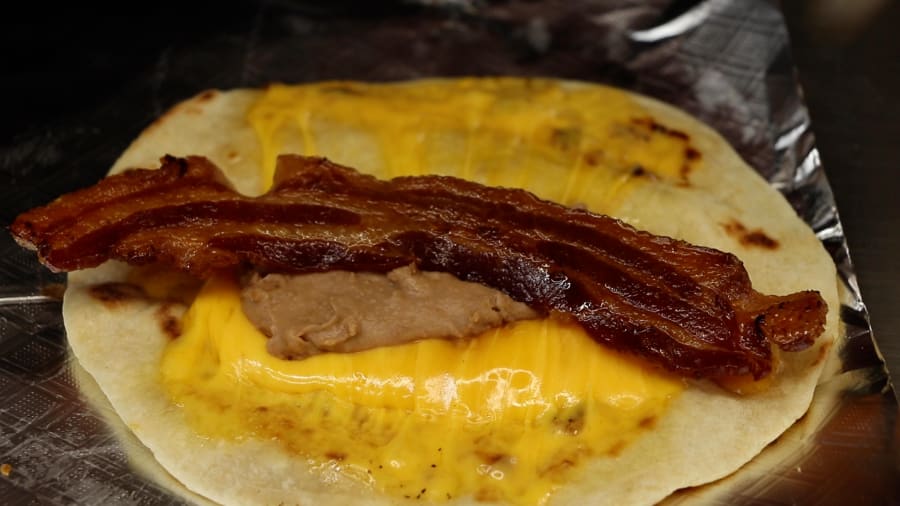
A good morning in San Antonio starts with a breakfast taco. And one of San Antonio’s most notorious breakfast taco spots also serves up another popular breakfast cuisine.
The Original Donut Shop has been serving up both breakfast tacos and donuts since the 1950s. And if you visit, there’s a chance you’ll be served by someone who has been at the restaurant for decades.
“We have so many employees that last 30 plus years here,” said Mónica Gómez, the restaurant’s general manager who has been working at The Original Donut Shop for more than twenty years herself.
Gómez said part of the restaurant’s appeal is how traditional it is. They’ve kept the same recipe for their carne guisada tacos since 1954. And along with the papa ranchera, the carne guisada is one of the most popular. They’re also known for their toasted bean and cheese.
“It’s part of our culture now,” Gómez said. “The bean and the cheese.”
And, of course, the tortillas are homemade.
“We start here at 4 a.m. just to have everything fresh by 6 a.m.,” Gómez said.
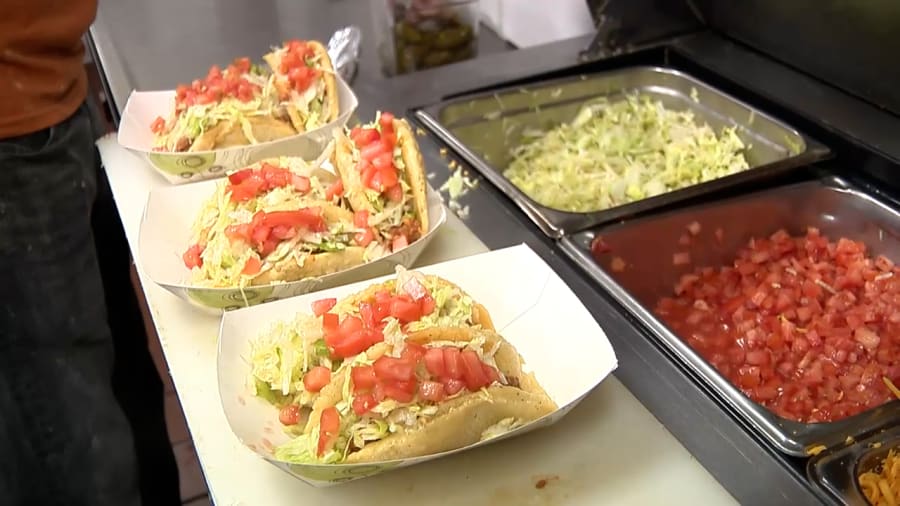
Nestled in the city’s inner West Side, about five miles away from The Original Donut Shop, is a taqueria that’s known for a very different kind of tortilla.
Ray’s Drive-In was established in 1965 by Raymond Lopez. It has gained popularity thanks to its signature puffy taco. The restaurant even holds the trademark for the puffy taco.
“A cloud of crunchy heaven-ness” is how night manager Nathan Morales describes it.
“Everything is made to order,” Morales said. “As soon as you order, the masa is dropped so that taco has that soft crunch.”
That soft crunch is achieved, in part, thanks to the tools they use to make the tacos. The design for those tools are kept under lock and key.
“That’s what’s so great about this place,” Morales said. “They figured out the tips and tricks early on and haven’t changed anything.”
The taco can be filled with picadillo, chicken, carne guisada or avocado. But here, it’s all about the tortilla.
‘A taco is a reflection of its time and place’: Newer styles emerging
Breakfast tacos and puffy tacos are just some of the San Antonio favorites locals remember growing up with.
But tacos pre-date our childhoods. In fact, the origin of the taco goes back thousands of years.
Watch the video below for a brief history of tacos and how they’ve been a vessel for collaborating cultures for generations.
We all know a taco. But what defines a taco?
A loose definition? A tortilla, filling and maybe salsa. But Ralat told us that is just the first definition.
“The second one is that a taco is a reflection of its time and place,” Ralat said. “A taco is regional.”
For a while, some types of tacos were just served up in certain regions of Texas and Mexico. But thanks to migration and social media trends, the world has gotten smaller. That’s reflected in the expanded offerings of our local taco scene.
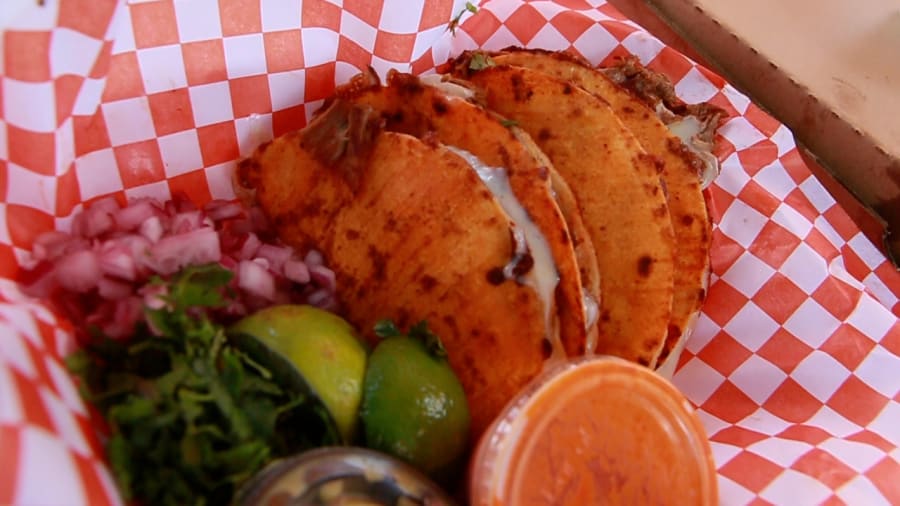
One example of one of these newer styles - birria.
The birria boom is still relatively new in San Antonio, but it’s been successful in California for years. Ralat says Birria made its way to the United States from its birthplace of Jalisco, Mexico.
Traditionally, birria was made with either goat or lamb. But beef birria is the most popular in the U.S.
“This is beef birria, which comes out of Tijuana,” Ralat said. “Particularly loaded with cheese.”
No birria taco is complete without the consommé, which is a type of stew that uses dried chiles and other spices.
Joshua Palacios and his wife Martha are originally from California. After moving to San Antonio, they saw an opportunity to bring birria here.
Martha’s family has a history in the restaurant business, so they had recipes dating back decades. They put their own spin on some of those recipes, and opened their food truck El Remedio in 2019.
Since then, the birria trend has exploded. El Remedio has expanded to two food trucks, and the Palacios family has plans for two more, plus a brick and mortar restaurant.
And they aren’t the only ones now serving up birria in San Antonio.
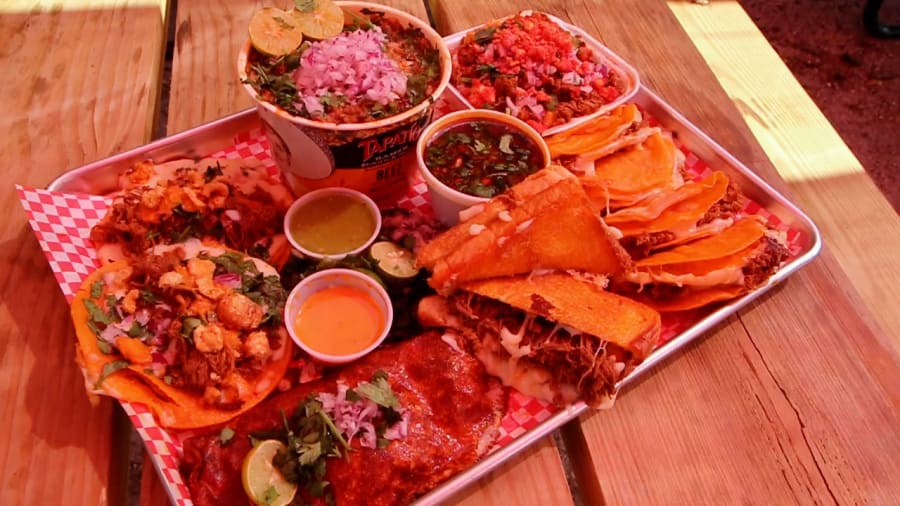
Another husband and wife duo, Martin Bargas and Sabrina Perez, opened Birria Barrio as a food truck on South Presa in 2020.
Bargas traces his love for birria to trips to Mexico as a kid. His business’s name is a nod to birria’s Mexican roots.
“People come in in groups and they eat,” Bargas said. “It’s like a neighborhood, you know, and in Spanish, barrio.”
Birria Barrio sells their birria in tacos, grilled cheese sandwiches and in ramen. Their concoctions are both delicious and highly Instagram-able.
Bargas attributes part of birria’s success in San Antonio to its trendiness. “Once people try it they say, ‘hey, you know what, I really like birria’,” Bargas said. “They might not have tried it if it wasn’t a trend.”
Birria Barrio quickly outgrew the truck, and now have a restaurant on South Presa.

Birria isn’t the only tradition Mexican style of taco that’s made its way to South Texas. Taquitos West Avenue serves up Jalisco-style street tacos seven days a week.
But you can only get their al pastor tacos - one of the more traditional options - Thursday through Sunday. This taco’s magic is in the adobo sauce with a secret ingredient used to marinate the pork.
It takes four to five hours to prepare the meat. The last step is to build the meat into a vertical mound using a trompo. The meat is sliced directly from the mound onto the tortilla, and garnished with onions, cilantro and pineapple.

At a food truck about a ten minute drive east from Taquitos West Avenue, you’ll find tacos served that bring the flavors of Mexico City and Laredo to San Antonio.
Wife and husband Lizzeth Martinez and Francisco Estrada own Naco Mexican Eatery. She’s from Laredo. He’s from Mexico City. They call their food style a family reunion - bringing flavors from both of their native regions to San Antonio via their food truck.
“It’s like binding both of our family recipes and traditions in one truck,” Martinez said. “So you’ll find the blue corn, but you’ll find the flour tortilllas. And you’ll find asada, but you’ll find huitlacoche.”
The couple lived in Mexico City before relocating to San Antonio a few years ago in search of a safer life for their children. But Francisco’s credentials as a lawyer in Mexico didn’t carry over.
So they decided to get in the taco business. And like Bargas and Palacios, they’ve been successful enough to expand. They plan to open a brick and mortar restaurant soon.
“We are very happy and proud that the people in San Antonio have accepted us,” Martinez said. “We are part of a community now.”
‘Via the taco’: The taco as a vessel to introduce other cuisines
It’s not just the styles that have changed. How people view the taco has changed as well.
Today, tacos can be found at high-end restaurants and fancy taquerias. They are recognized as a worthy culinary experience. But people who grew up in San Antonio, children in the 1960s and 1970s, know that wasn’t always the case.
“When I was a kid, I would take tacos to school in the 1960s, but I would sort of furtively eat my taco,” said John Phillip Santos, professor of mestizo studies at the Honors College at the University of Texas at San Antonio. “It was still an object of ridicule.
Santos says that began to change in the mid-1970s.
“It was more likely that somebody might want to trade something for my taco,” he said.
This broad acceptance of the taco has allowed the food to transform. And today, you can find the taco being adopted by other cultures to introduce their cuisines to South Texas.
“The metaphor of the taco has begun to emerge as a kind of a food practice that will literally hug any cultural tradition between its covers,” Santos said.
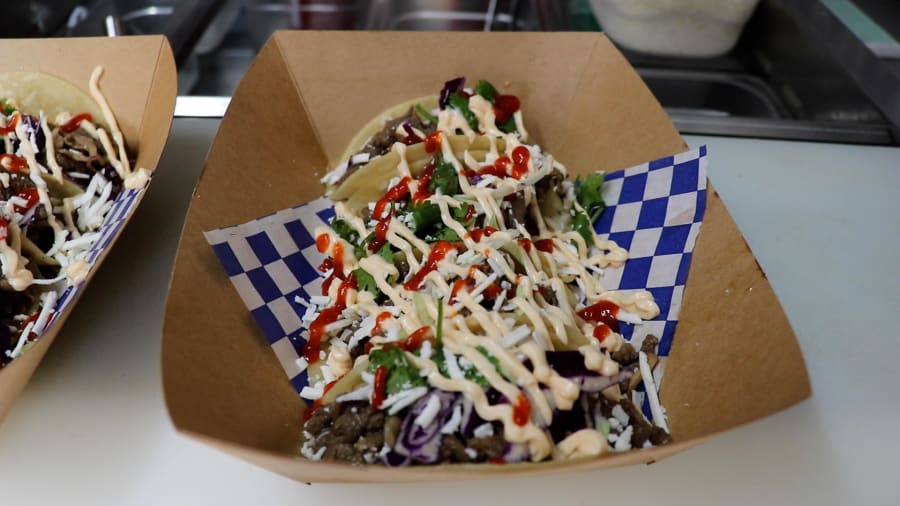
Ever heard of Korean street tacos?
Stephen Scarantino, the owner of Bull Gogi Boys, put the item on his menu as a way to introduce San Antonians to Korean bulgogi, a type of marinated, thinly-sliced beef.
Scarantino credits the street tacos for helping his food truck stay in business.
“If we didn’t have the Korean street taco, we probably wouldn’t have lasted this long,” Scarantino said. “That’s how instrumental it has been to getting people to try our menu.”
According to Scarantino, once customers try his cuisine in a street taco, a vessel they’re familiar with, it’s a gateway to other menu items.

Scarantino isn’t alone in this approach. The Jerk Shack, a local Jamaican restaurant, has also gotten into the fusion taco game.
Jerk is just a spice blend - it includes garlic, thyme, scallion, and it’s spicy. And now, Jerk Shack owner and chef Nicola Blaque is using it to make tacos.
“We put pineapple pico on there,” Blaque said. “We have an avocado cream. So our flavors are Carribean, but with a Hispanic influence.”
For both Blaque and Scarantino, creating a taco that fuses two cultures and cuisines was born out of a love for the cultures and cuisines of their childhoods.
“What is the easiest way for Texans to gain access to cuisine? Via the taco,” Ralat said.
Scarantino told us the food he makes is based off of his mother’s cooking. And Blaque, who is originally from Jamaica, said Carribean cuisine has always been a part of her.
“So many people are migrating to San Antonio and we all have some great things to share,” Blaque said. “I think that’s the best way to do it - is through food and obviously tacos.”


